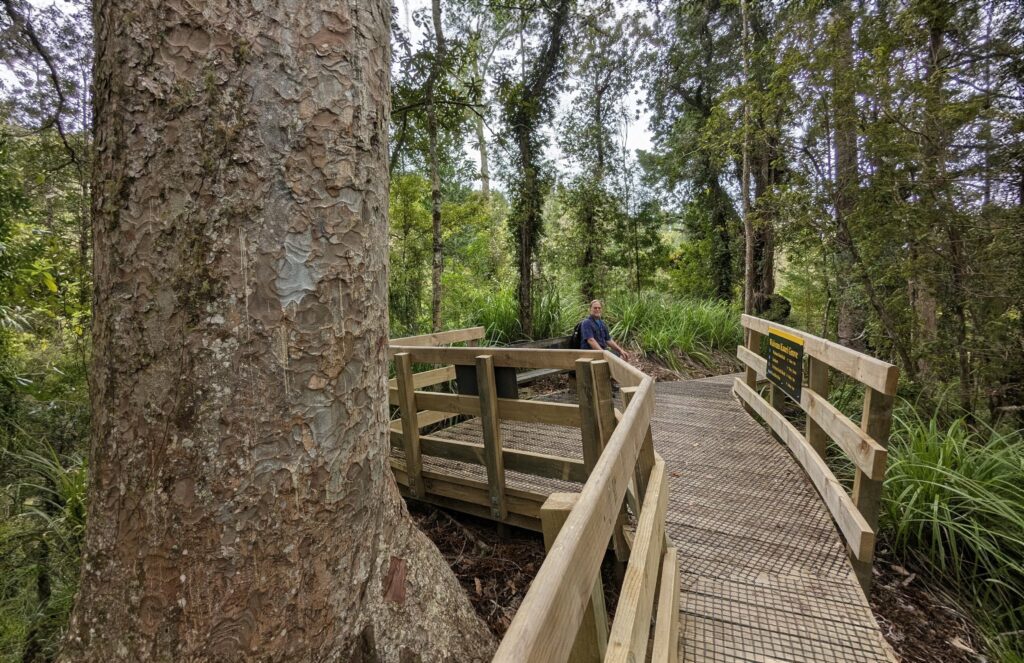Oct 9, 2025 Kauri Grove
We’ve moved to a B&B on the Coromandel Peninsula, the finger of land between the Firth of Thames that lies to the east of Auckland, and the Bay of Plenty to the east of the Coromandel. The Māori name for the peninsula, Te Tara-o-te-Ika-a-Māui, translates to “the barb of Māui’s fish,” referencing a myth where the demigod Māui caught the North Island, from his canoe which is the South Island. The North Island is imagined as a sting ray, with the mouth at the bottom where Wellington is, the tail is the Northland peninsula extending north from Auckland, and the barb being the Coromandel Peninsula. Amazing how the whole island could be imagined from the sky with no ability to fly above it!
Before European contact the peninsula was covered with a huge forest dominated by Kauri, a tree that towered above the forest canopy, with tall, straight trunks absent of branches and suffocating vines. The forest floor was dark under the canopy of many other trees and populated by birds from the chicken sized kiwi to colorful parrots and songbirds. The huge 6 foot tall moa birds and the giant eagle had been exterminated by the Māori generations earlier. Though European & American whalers, sealers and missionaries began colonizing the Bay of Islands area in the early 1800’s, the Coromandel was not seriously settled until the 1820’s when the kauri wood was found to be excellent for woodwoorking, boat building and ship’s masts and spars. Within 80 years logging caused almost the entire kauri forest to be reduced to tiny pockets of surviving trees in virtually inaccessible ravines in the mountainous spine of the peninsula. We visited one of those pockets of trees today.

Due to the current threat of “kauri dieback” disease (caused by a ‘water-mold’ related to another that caused the Irish ‘potato blight’) we are required to wash and disinfect our shoes when entering and leaving the forest, and to stay on the raised boardwalk to avoid touching our shoes to the roots of the trees.

This teen-aged kauri shows the ‘camouflage’ bark that sheds in patches, making it impossible for vines (like the strangler fig) to get a good grip on the trunk.

This massive tree is several hundred years old. Look closely, Robert is sitting on a bench on the deck, giving a perspective of the size these trees can attain, some have been known to be over two thousand years old!
